The Origins of Linen Service: From Ancient Necessity to Modern Convenience
Linen service is a cornerstone of modern business operations, providing essential textiles for industries ranging from hospitality and healthcare to food service and manufacturing. Yet, the origins of this service trace back thousands of years, rooted in practicality, hygiene, and the drive for efficiency. This article explores the fascinating history of linen service, from its ancient beginnings to its transformation into the sophisticated industry we know today.
The Early Days: Linen in Antiquity
Linen, a fabric made from the fibers of the flax plant, has been in use for over 10,000 years. Ancient civilizations, including those in Mesopotamia, Egypt, and the Mediterranean, valued linen for its durability, breathability, and ease of cleaning. The Egyptians, in particular, considered linen a symbol of purity and wealth, using it for clothing, wrappings for mummies, and everyday household items.
As societies advanced, the demand for clean linens grew. Maintaining cleanliness became crucial in communal settings, such as public baths in ancient Rome, where towels and sheets were used and washed regularly. These practices established the foundation for organized linen management and laundering services.
Medieval and Early Modern Linen Use
During the Middle Ages, linen was a staple fabric in Europe, prized for its ability to withstand repeated washing. Monasteries, castles, and wealthy households employed staff to maintain their extensive collections of linens, which included bed sheets, tablecloths, and clothing. The labor-intensive process of washing, drying, and ironing linens often required dedicated facilities and significant manpower.
As cities grew during the Renaissance, communal laundry services began to emerge. Rivers and public washhouses became hubs for laundering, as individuals and businesses outsourced their cleaning needs. These early iterations of linen services were manual and localized, relying on human labor and natural resources.
Industrial Revolution: The Birth of Linen Service as an Industry
The Industrial Revolution in the 18th and 19th centuries marked a turning point for linen service. Technological innovations, such as mechanized washing machines, steam presses, and advanced detergents, revolutionized laundry processes. These advancements made it possible to clean larger volumes of linens more efficiently, paving the way for commercial linen services.
In the 19th century, the rise of urbanization and the growth of industries like hospitality and healthcare created a demand for professional linen management. Hotels, hospitals, and restaurants needed consistent access to clean, high-quality textiles. Entrepreneurs recognized this opportunity and established the first organized linen rental services, providing businesses with linens on a subscription basis and handling the laundering.
The Emergence of Linen Rental Services
One of the most significant developments in the history of linen service was the introduction of the linen rental model. Rather than purchasing and maintaining their own linens, businesses could lease them from specialized providers. This innovation offered several advantages:
- Cost Savings: Businesses avoided the upfront costs of purchasing linens and the ongoing expenses of maintaining laundry facilities.
- Consistency: Linen rental services ensured a steady supply of clean, professionally laundered items.
- Efficiency: Outsourcing linen management allowed businesses to focus on their core operations.
The first commercial linen rental companies appeared in Europe and North America during the late 19th century, serving hotels and restaurants. By the early 20th century, the model had expanded to include healthcare facilities, factories, and other industries.
Modern Linen Service: Automation and Sustainability
In the 20th and 21st centuries, linen service has evolved into a global industry characterized by technological innovation and environmental consciousness. Automated washing systems, RFID tracking for inventory management, and advanced logistics have streamlined operations, enabling providers to serve diverse industries with unprecedented efficiency.
Sustainability has also become a key focus. Modern linen service companies invest in water recycling systems, energy-efficient equipment, and biodegradable detergents to reduce their environmental impact. Additionally, many promote the use of reusable textiles to minimize waste and align with global efforts to combat climate change.
The Role of Linen Service Today
Today, linen service is indispensable across numerous sectors. In healthcare, sterile linens are crucial for patient safety. In hospitality, clean and well-maintained linens enhance guest satisfaction. Restaurants and catering companies rely on linen services to provide tablecloths, napkins, and uniforms that reflect their brand’s professionalism.
Linen service has also expanded into niche markets, offering specialized products like flame-resistant uniforms, cleanroom garments, and microfiber cleaning cloths for industrial applications. This adaptability underscores the industry’s ability to meet the evolving needs of its clients.
Conclusion
The origins of linen service are deeply rooted in humanity’s pursuit of cleanliness, efficiency, and convenience. From ancient Egypt to modern industrial laundries, the journey of linen service reflects technological progress and changing societal needs. Today, it remains a vital industry, seamlessly integrating tradition and innovation to provide essential support for businesses and communities worldwide.


